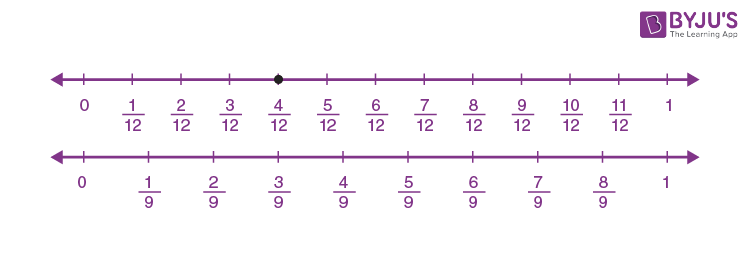Students can use equivalent fractions questions and answers to help them understand the concept better. The term “equivalent fractions” refers to the process of reducing a given fraction into its equivalent fraction. We’ve offered a set of equivalent fractions questions along with clear solutions to help you grasp the concept quickly. To learn more about equivalent fractions, click here.
|
Definition: Equivalent fractions are defined as fractions that have the same value despite having various numerators and denominators. For instance, 4/6 and 6/9 are equivalent fractions since they are both equal to 2/3 when simplified. |
Equivalent Fractions Questions with Solutions
|
Steps to Find Equivalent Fractions: Equivalent fractions are obtained by dividing or multiplying the numerator and denominator with the same number. When these fractions are simplified, they are reduced to the same number. Let’s look at the two methods for converting fractions to equivalent fractions:
Also, read: Fractions. |
1. In the denominator, I have 2. 2/4 is my equivalent fraction. What fraction am I?
Solution:
Given that, the denominator of one fraction is 2.
So, let the numerator of the fraction be x.
Hence, the fraction formed here is x/2.
Also, given that, x/2 is equivalent to 2/4.
i.e., x/2 = 2/4
Hence, x = 4/4 = 1
Therefore, the fraction is 1/2.
2. Check whether the fraction 7/3 is equivalent to 16/6.
Solution:
To check whether the given fractions are equivalent or not, we can either multiply or divide the numerator and denominator by the same number.
So, now let’s start checking the fractions using the multiplication operation.
i.e., 7(2)/3(2) = 14/6, which is not equal to 16/6.
Hence, the fraction 7/3 is not equivalent to 16/6.
3. Check whether the fraction 7/2 is equivalent to 21/6.
Solution:
To check whether the fraction 7/2 is equivalent to 21/6 or not, multiply both the numerator and denominator of 7/2 by 3.
i.e., 7(3)/2(3) = 21/6.
Hence, the fraction 7/2 is equivalent to 21/6.
4. Find the value of “a” such that the fraction should be equivalent: 11/2 = 33/a
Solution:
Given: 11/2 = 33/a
Hence, a = 33(2)/11
a = 66/11 = 6
Therefore, the value of a is 6.
Also, the fraction 11/2 is equivalent to 33/6.
5. Find the value of x, such that the fraction should be equivalent: 3 = 12/x.
Solution:
Given: 3 = 12/x
Hence, x = 12/3 = 4.
Hence, the value of x is 4.
Also, 3/1 is equivalent to 12/4.
Also, check: Find the Value of X Calculator.
6. Find the variable’s value to make each pair of fractions equivalent: a/3 = 2/b
(i) If a = 1, then find the value of b.
(ii) If b = 3, then find the value of a.
Solution:
Given:
a/3 = 2/b
(i) To find the value of b, if a = 1.
Hence, ⅓ = 2/b
Therefore, b = 2(3) = 6.
Hence, if a = 1, then b = 6, so that ⅓ is equivalent to 2/6.
(ii) To find the value of a, if b = 3.
Hence, a/3 = 2/3
Thus, a = 2.
Therefore, if b = 3, then a = 2, so that ⅔ is equivalent to ⅔.
7. In the denominator, I have 24. And my equivalent fraction is 2/3. What fraction am I?
Solution:
Given that, the denominator of one fraction is 24.
So, let the numerator of the fraction be x.
Hence, the fraction formed here is x/24.
Also, given that, x/24 is equivalent to 2/3.
i.e., x/24 = 2/3
Hence, x = 2(24)/3 = 48/3 = 16
Therefore, the fraction is 16/24.
8. Find the variable’s value, which makes the fraction equivalent:
⅔ = a/6 = 6/b = c/12 = d/15 = 12/e = f/21 = 16/g
Solution:
When you observe the given set of fractions, the numerators are the multiples of 2, and denominators are the multiples of 3.
Hence, we can get:
2/3 = 4/6 = 6/9 = 8/12 = 10/15 = 12/18 = 14/21 = 16/24
Therefore,
a = 4, b = 9, c = 8, d = 10, e = 18 , f = 14 , g = 24 .
9. Check whether the fraction 5/10 is equivalent to 1/2 using the number line.
Solution:
The number line representing the fractions 5/10 and ½ are as follows:

This shows that the fraction 5/10 is equivalent to 1/2.
10. Find the missing equivalent fraction: 4/12 = ______, from the given number line.

Solution:
From the given number line, it is observed that the fraction equivalent to 4/12 is 3/9.
Here, the following number line shows the equivalent fraction of 4/12.

Explore More Articles:
- Real Numbers Questions
- Prime Numbers Questions
- Sequence and Series Questions
- Permutations and Combinations Questions
- Integers Questions
- Geometry Questions
Practice Questions
Answer the following questions:
- In the numerator, I have 1. My equivalent fraction is 4/24. What fraction am I?
- Check whether the fraction 40/100 is equivalent to 4/10.
- Find the value of x such that the fraction should be equivalent: x/14 = 16/28.
Comments